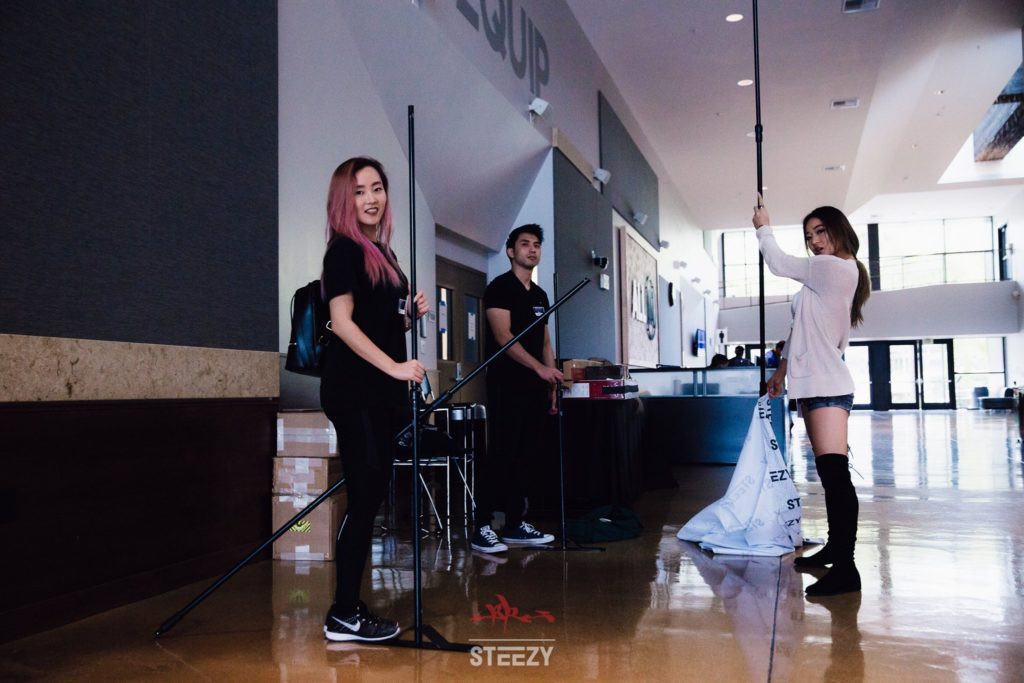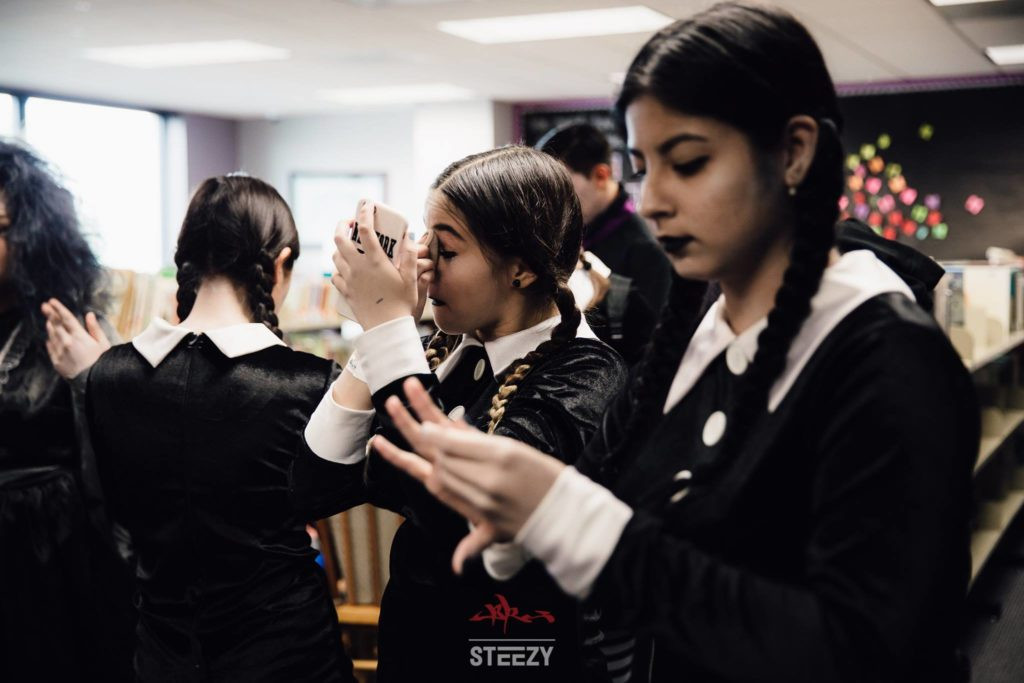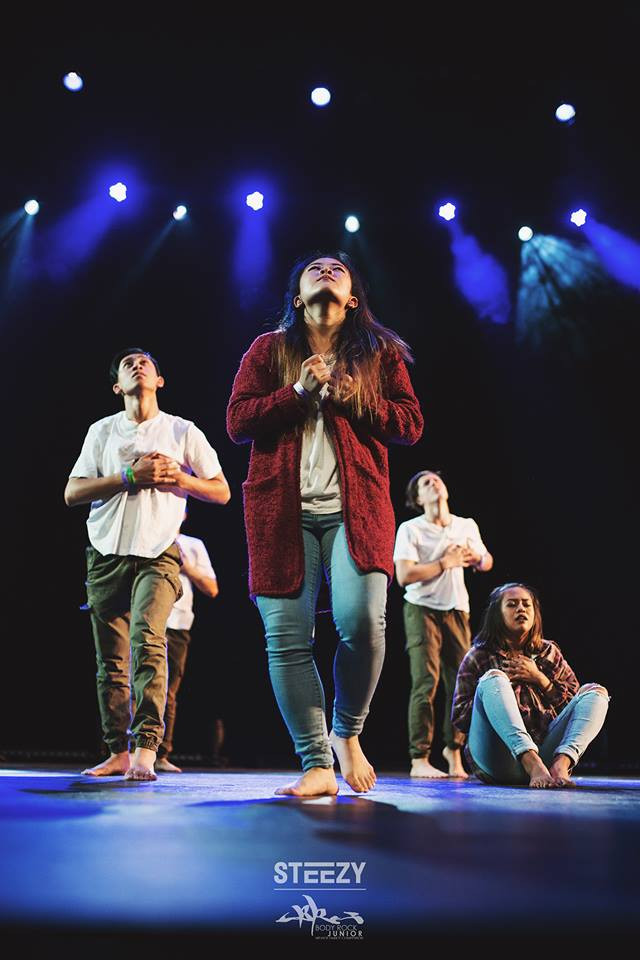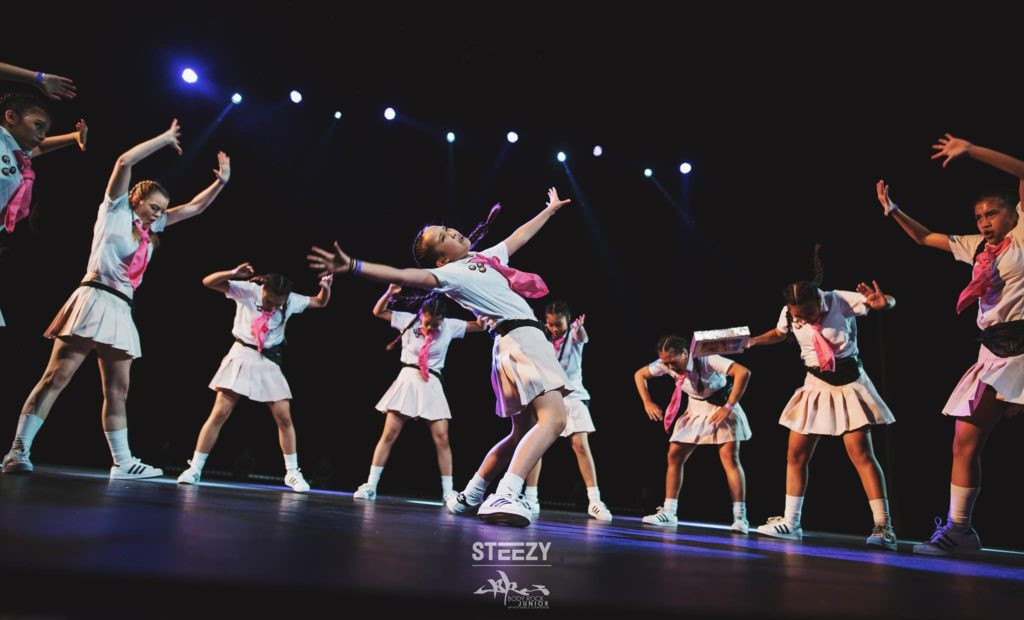Are you longing to express yourself through dance but held back by shyness? At ten-dance.com, we understand this common struggle and offer effective strategies to overcome it, helping you discover the joy of movement and unlock your dance potential. Learning How To Not Be Shy When Dancing can feel empowering and bring confidence. This guide gives you actionable steps to overcome performance anxiety, self-consciousness, and fear of judgment. You will find the confidence to shine on the dance floor through positive self-talk, understanding dance fundamentals, and building stage presence.
1. Understanding the Root of Shyness in Dance
Why does shyness creep in when we want to dance? Many factors contribute to this, and recognizing them is the first step towards overcoming them.
1.1. The Fear of Judgment
The most common reason for shyness is the fear of being judged by others. We worry about what people will think of our moves, our appearance, or our skill level. It’s essential to remember that everyone starts somewhere, and the dance community is generally supportive and encouraging.
-
Combating the Fear:
- Focus on your own progress: Instead of comparing yourself to others, celebrate your improvements and milestones.
- Surround yourself with positivity: Choose dance environments where encouragement and support are the norm.
- Remember why you started dancing: Reconnect with the joy and passion that drew you to dance in the first place.
1.2. Self-Consciousness and Body Image
Many people feel self-conscious about their bodies and how they look while dancing. This can lead to anxiety and a reluctance to move freely.
-
Overcoming Self-Consciousness:
- Focus on the feeling, not the look: Dance is about expression and connection with the music, not about achieving a perfect image.
- Wear comfortable clothing: Choose outfits that make you feel good and allow you to move freely.
- Practice self-acceptance: Embrace your body and its unique capabilities. Remember that every body is a dancing body.
1.3. Lack of Confidence in Skills
Feeling unsure about your dance skills can also contribute to shyness. You might worry about making mistakes or not being good enough.
-
Building Confidence:
- Take classes and practice regularly: The more you learn and practice, the more confident you’ll become in your abilities.
- Start with the basics: Master the fundamentals of your chosen dance style before moving on to more complex steps.
- Celebrate small victories: Acknowledge and appreciate your progress, no matter how small.
 Dancing can be intimidating, but it doesn't have to be. Embrace the joy and let go of inhibitions.
Dancing can be intimidating, but it doesn't have to be. Embrace the joy and let go of inhibitions.
2. Practical Steps to Break Free from Shyness
Now that we’ve explored the causes of shyness, let’s dive into practical steps you can take to overcome it and unleash your inner dancer.
2.1. Start in a Safe and Supportive Environment
Choose a dance class or studio where you feel comfortable and supported. Look for instructors who are patient, encouraging, and focused on creating a positive learning environment.
-
Finding the Right Environment:
- Visit different studios: Take trial classes to find a studio that feels like a good fit for you.
- Talk to current students: Ask about their experiences and the overall atmosphere of the studio.
- Look for beginner-friendly classes: These classes are designed for people with little or no dance experience and focus on building confidence and basic skills.
2.2. Practice in Private
Before dancing in front of others, spend time practicing in private. This will give you a chance to get comfortable with the steps and movements without feeling self-conscious.
-
Effective Private Practice:
- Use online resources: ten-dance.com offers a wealth of online dance tutorials for all levels and styles.
- Practice in front of a mirror: This will help you see your movements and make corrections.
- Record yourself: Watching yourself dance can help you identify areas for improvement and track your progress.
2.3. Focus on the Music
When you’re dancing, try to focus on the music rather than your own movements. Let the rhythm and melody guide your body and allow yourself to get lost in the music.
-
Connecting with the Music:
- Listen to the music beforehand: Familiarize yourself with the rhythm, melody, and dynamics of the song.
- Feel the beat: Let the beat pulse through your body and guide your movements.
- Express the emotions of the music: Allow the emotions of the music to inspire your dance.
2.4. Visualize Success
Before a dance class or performance, take some time to visualize yourself dancing confidently and successfully. Imagine yourself moving smoothly, connecting with the music, and enjoying the experience.
-
Effective Visualization:
- Find a quiet space: Sit or lie down in a comfortable position where you won’t be disturbed.
- Close your eyes and imagine: See yourself dancing with confidence and ease.
- Feel the emotions: Experience the joy, excitement, and satisfaction of dancing well.
2.5. Embrace Imperfection
Remember that no one is perfect, and everyone makes mistakes. Instead of getting discouraged when you mess up, try to laugh it off and keep going.
-
Reframing Mistakes:
- View mistakes as learning opportunities: Every mistake is a chance to learn and improve.
- Don’t be too hard on yourself: Treat yourself with the same kindness and compassion you would offer a friend.
- Focus on progress, not perfection: Celebrate your improvements and milestones, no matter how small.
2.6. Break Down the Performance
Reduce anxiety by preparing thoroughly. Break down your dance into smaller, manageable sections. Practice each section until you feel confident, then gradually piece them together.
Table: Performance Preparation Breakdown
| Section | Task | Goal |
|---|---|---|
| Warm-up | Dynamic stretches and light cardio | Increase blood flow, flexibility, and reduce the risk of injury |
| Fundamentals | Basic steps and techniques | Ensure solid foundation and muscle memory |
| Choreography | Review and practice the dance routine | Smooth transitions and confident execution |
| Music | Listen and internalize the rhythm and beat | Sync movements with music and express the emotions |
| Cool-down | Static stretches and deep breathing | Reduce muscle soreness and promote relaxation |
2.7. Positive Self-Talk
Challenge negative thoughts and replace them with positive affirmations. Remind yourself of your strengths, your progress, and your passion for dance.
-
Examples of Positive Self-Talk:
- “I am a capable and talented dancer.”
- “I am improving with every class and practice session.”
- “I love to dance, and I am grateful for the opportunity to express myself.”
 Dancing is a journey, not a destination. Embrace the process and celebrate your progress along the way.
Dancing is a journey, not a destination. Embrace the process and celebrate your progress along the way.
3. The Power of Community and Connection
Dancing is not just an individual activity; it’s also a social one. Connecting with other dancers can provide support, encouragement, and a sense of belonging.
3.1. Join a Dance Community
Look for local dance groups, clubs, or organizations where you can meet other dancers, share your experiences, and learn from each other.
-
Finding a Dance Community:
- Check out local studios and community centers: Many offer dance classes, workshops, and social events.
- Search online: Use social media and online forums to find dance communities in your area.
- Attend dance events: Go to performances, workshops, and festivals to meet other dancers.
3.2. Find a Dance Buddy
Partnering with a friend or classmate can make dancing less intimidating and more fun. You can practice together, support each other, and celebrate your progress.
-
Benefits of a Dance Buddy:
- Motivation and accountability: Having someone to practice with can help you stay motivated and on track.
- Support and encouragement: A dance buddy can provide encouragement and support when you’re feeling discouraged.
- Feedback and advice: A dance buddy can offer valuable feedback and advice on your technique and performance.
3.3. Share Your Progress
Don’t be afraid to share your progress with others, whether it’s through social media, a blog, or a personal journal. Sharing your journey can help you stay motivated, connect with other dancers, and inspire others to overcome their own shyness.
-
Ways to Share Your Progress:
- Post videos of your dancing on social media: This can be a great way to get feedback and connect with other dancers.
- Write about your experiences in a blog or journal: This can help you reflect on your progress and identify areas for improvement.
- Share your story with others: Talk to friends, family, and classmates about your journey as a dancer.
4. Style Exploration: Finding Your Perfect Fit
Discovering your preferred dance style can significantly boost your confidence. Each genre offers a unique form of expression, and finding the one that resonates with you can make all the difference.
Table: Exploring Different Dance Styles
| Dance Style | Description | Key Elements | Benefits |
|---|---|---|---|
| Ballet | Classical dance form known for its grace and precision | Pointe work, turnout, and elegant lines | Improves posture, flexibility, strength, and discipline |
| Hip Hop | Street dance style characterized by its energetic and improvisational moves | Grooves, isolations, and freestyle | Enhances coordination, rhythm, cardiovascular health, and self-expression |
| Contemporary | Expressive dance form that blends ballet, jazz, and modern elements | Fluid movements, floor work, and emotional expression | Promotes creativity, emotional release, and physical fitness |
| Salsa | Latin dance known for its fast-paced rhythms and partner work | Quick footwork, turns, and sensual movements | Increases cardiovascular health, coordination, and social interaction |
| Ballroom | Set of partner dances including waltz, tango, and foxtrot | Frame, posture, and precise steps | Improves posture, balance, social skills, and mental acuity |
| Jazz | Dynamic dance form characterized by its syncopated rhythms and improvisations | Isolations, leaps, and turns | Boosts energy levels, coordination, and self-confidence |
5. Addressing Performance Anxiety
Performance anxiety can be a significant barrier to enjoying dance. Here are strategies to help manage and overcome this challenge:
5.1. Understanding Performance Anxiety
Performance anxiety is a form of social anxiety that occurs when you feel nervous or fearful about performing in front of an audience. Symptoms can include rapid heartbeat, sweating, trembling, and difficulty concentrating.
5.2. Strategies for Managing Anxiety
- Deep Breathing: Practice deep, slow breaths to calm your nervous system. Inhale deeply through your nose, hold for a few seconds, and exhale slowly through your mouth.
- Mindfulness: Focus on the present moment rather than worrying about the future. Pay attention to your senses and surroundings.
- Progressive Muscle Relaxation: Tense and release different muscle groups to reduce physical tension.
- Cognitive Restructuring: Identify and challenge negative thoughts. Replace them with positive and realistic ones.
- Exposure Therapy: Gradually expose yourself to performance situations to build confidence. Start with small, low-pressure performances and gradually work your way up to larger ones.
5.3. Seeking Professional Help
If performance anxiety is significantly impacting your life, consider seeking help from a therapist or counselor. They can provide you with additional strategies and support to manage your anxiety.
 Find your tribe! Sharing dance experiences with others fosters support and growth.
Find your tribe! Sharing dance experiences with others fosters support and growth.
6. Overcoming Self-Doubt and Imposter Syndrome
Many dancers experience self-doubt, questioning their abilities and feeling like they’re not good enough. This can lead to imposter syndrome, the feeling of being a fraud despite evidence of your competence.
6.1. Identifying Self-Doubt
Pay attention to your thoughts and feelings. Do you often criticize yourself or compare yourself to others? Do you downplay your accomplishments or attribute them to luck?
6.2. Strategies for Overcoming Self-Doubt
- Challenge Negative Thoughts: When you notice a negative thought, ask yourself if it’s really true. Is there evidence to support it? Are there other ways of looking at the situation?
- Focus on Your Strengths: Make a list of your strengths and accomplishments. Remind yourself of your skills and talents.
- Set Realistic Goals: Break down big goals into smaller, more manageable steps. This will help you feel more confident and motivated.
- Celebrate Your Progress: Acknowledge and appreciate your progress, no matter how small.
- Seek Support: Talk to friends, family, or a therapist about your feelings of self-doubt.
6.3. Addressing Imposter Syndrome
- Recognize Your Accomplishments: Keep a record of your achievements and review it regularly.
- Challenge Your Inner Critic: Identify and challenge negative thoughts that fuel imposter syndrome.
- Focus on Learning: View challenges as opportunities to learn and grow.
- Share Your Feelings: Talk to others about your experiences with imposter syndrome. You may be surprised to find that many people feel the same way.
- Accept Compliments: Allow yourself to receive compliments without downplaying your accomplishments.
7. Harnessing the Power of Mindset
Your mindset plays a crucial role in your ability to overcome shyness and embrace dance.
7.1. Cultivating a Growth Mindset
A growth mindset is the belief that your abilities and intelligence can be developed through dedication and hard work. This is the research from Stanford University psychologist Carol Dweck shows that people with a growth mindset are more likely to persevere through challenges and achieve their goals.
7.2. Shifting from Fixed to Growth Mindset
- Embrace Challenges: View challenges as opportunities to learn and grow.
- Persist Through Obstacles: Don’t give up when things get difficult. Keep practicing and learning.
- Learn from Criticism: Use feedback to improve your skills.
- Find Inspiration in the Success of Others: Celebrate the achievements of others and use them as motivation.
- Value Effort Over Talent: Recognize that hard work and dedication are more important than natural talent.
7.3. The Role of Positive Affirmations
Positive affirmations can help you reprogram your thoughts and beliefs, replacing negative self-talk with positive and empowering statements.
7.4. Creating Effective Affirmations
- Write in the Present Tense: Use “I am” statements to affirm your desired reality.
- Be Specific: Focus on specific goals and qualities you want to develop.
- Be Positive: Frame your affirmations in a positive light.
- Be Realistic: Choose affirmations that you believe are possible.
- Repeat Regularly: Recite your affirmations daily to reinforce them in your mind.
8. Stage Presence and Performance Techniques
Developing stage presence is essential for overcoming shyness and connecting with your audience.
8.1. What is Stage Presence?
Stage presence is the ability to command attention, engage your audience, and convey your passion and energy through your performance.
8.2. Techniques for Enhancing Stage Presence
- Eye Contact: Make eye contact with different members of the audience to create a personal connection.
- Facial Expressions: Use facial expressions to convey the emotions of the dance and engage your audience.
- Body Language: Use your body language to communicate confidence and energy. Stand tall, move with purpose, and use gestures to emphasize your movements.
- Energy and Enthusiasm: Bring energy and enthusiasm to your performance. Show your passion for dance and let it shine through.
- Confidence: Project confidence, even if you don’t feel it. Believe in yourself and your abilities.
8.3. Practicing in Front of Others
The more you practice performing in front of others, the more comfortable you will become.
8.4. Opportunities to Perform
- Dance Classes: Perform in front of your classmates and instructor.
- Open Mic Nights: Participate in local open mic nights or talent shows.
- Community Events: Volunteer to perform at community events or festivals.
- Online Platforms: Share videos of your dancing on social media or online platforms.
 Freedom through movement. Dancing offers a unique path to self-expression and joy.
Freedom through movement. Dancing offers a unique path to self-expression and joy.
9. The Role of Dance Education
Dance education plays a crucial role in developing your skills, confidence, and stage presence.
9.1. Benefits of Formal Dance Training
- Structured Learning: Formal dance training provides a structured and progressive learning environment.
- Expert Guidance: Experienced instructors can provide you with personalized feedback and guidance.
- Skill Development: Dance classes help you develop your technique, coordination, and musicality.
- Confidence Building: As you improve your skills, you will gain confidence in your abilities.
- Community Connection: Dance classes provide you with the opportunity to connect with other dancers and build a supportive community.
9.2. Finding the Right Dance Class
- Consider Your Interests: Choose a dance style that you enjoy and are passionate about.
- Research Local Studios: Look for studios that offer classes in your chosen style.
- Visit Studios and Observe Classes: Observe classes to get a feel for the teaching style and atmosphere.
- Talk to Instructors and Students: Ask about their experiences and the overall quality of the program.
- Consider Your Budget and Schedule: Choose a class that fits your budget and schedule.
9.3. Online Dance Resources
Online dance resources can supplement your formal training and provide you with additional learning opportunities.
9.4. Platforms for Learning Dance Online
- ten-dance.com: ten-dance.com offers a wide range of online dance tutorials for all levels and styles.
- YouTube: YouTube is a great resource for free dance tutorials and inspiration.
- Dance Studio Websites: Many dance studios offer online classes and workshops.
- Online Dance Communities: Join online dance communities to connect with other dancers and share your experiences.
10. Continuous Self-Assessment and Improvement
Overcoming shyness is an ongoing process that requires continuous self-assessment and improvement.
10.1. Reflecting on Your Progress
Take time to reflect on your progress and identify areas where you can improve.
10.2. Methods for Self-Assessment
- Journaling: Write about your experiences, challenges, and successes.
- Video Recording: Record yourself dancing and review your performance.
- Seeking Feedback: Ask friends, family, or instructors for feedback.
- Setting Goals: Set realistic goals and track your progress.
- Celebrating Milestones: Acknowledge and celebrate your achievements.
10.3. Setting Realistic Goals
- Be Specific: Choose goals that are specific and measurable.
- Be Achievable: Set goals that are challenging but attainable.
- Be Relevant: Choose goals that align with your interests and values.
- Be Time-Bound: Set a deadline for achieving your goals.
10.4. Seeking Feedback
- Ask Specific Questions: Ask for feedback on specific aspects of your performance.
- Be Open to Criticism: Be willing to receive constructive criticism.
- Listen Actively: Pay attention to the feedback you receive.
- Thank the Person Giving Feedback: Show your appreciation for their time and effort.
- Use Feedback to Improve: Use the feedback you receive to improve your skills and performance.
You can connect with dance events and classes locally by visiting 60 Lincoln Center Plaza, New York, NY 10023, United States or call us at +1 (212) 769-7000 and visit our website at ten-dance.com.
Stop being too shy to dance and go blossom.
FAQ: Conquering Dance Floor Shyness
1. What is the main reason people feel shy when dancing?
The main reason is often the fear of judgment. People worry about being watched and criticized for their moves or appearance.
2. How can I build confidence before dancing in public?
Practice in private using online resources like ten-dance.com, focusing on getting comfortable with the steps and music.
3. What should I do if I make a mistake while dancing?
Embrace imperfection. Everyone makes mistakes, even professionals. Laugh it off and keep going; view it as a learning opportunity.
4. How does joining a dance community help with shyness?
Joining a dance community provides support, encouragement, and a sense of belonging, making it easier to overcome self-consciousness.
5. Can visualizing success really help reduce dance anxiety?
Yes, visualizing yourself dancing confidently can significantly reduce anxiety by mentally preparing you for a successful performance.
6. What are some positive self-talk phrases I can use?
Try phrases like “I am a capable dancer” or “I am improving with every session” to boost your confidence.
7. How does focusing on the music help with dance shyness?
Focusing on the music allows you to get lost in the rhythm and melody, reducing self-consciousness about your movements.
8. What’s the importance of finding the right dance style?
Finding a dance style that resonates with you enhances your confidence and enjoyment, making you more comfortable expressing yourself.
9. What techniques can enhance stage presence?
Techniques include making eye contact, using expressive facial expressions, confident body language, and projecting energy and enthusiasm.
10. Where can I find supportive dance classes or communities in the USA?
Check local studios, community centers, and online dance platforms like ten-dance.com for beginner-friendly classes and communities.
With dedication and the right strategies, you can break free from shyness and embrace the joy of dance. Start today, and discover the confident dancer within you!
